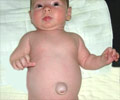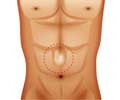Surgical repair of athletic hernia using tension-free mesh and a standardized rehabilitation protocol are successful in returning athletes to competition.
Surgical repair of athletic hernia using tension-free mesh and a standardized rehabilitation protocol are successful in returning athletes to competition, according to new research released today at the 2007 Annual Meeting of the American Orthopaedic Society for Sports Medicine at the Telus Convention Center.
Dr. Brunt and colleagues studied the results of more than 60 athletic hernia repair surgeries to evaluate the experience of athletes undergoing tension-free mesh surgical repair using a standardized rehabilitation protocol.The investigators found a high rate of successful return to athletic competition. They also determined that the standardized rehabilitation protocol was useful in providing consistency in postoperative management and a structured approach to activity.
“Using a tension-free mesh repair and a standardized rehabilitation protocol we have successfully returned athletes to competition in more than 90% of cases,” says principal investigator L. Michael Brunt, M.D., professor of surgery at Washington University School of Medicine in St. Louis.
Athletic hernia is not a true hernia in a strict sense, which is defined as a protrusion through a hole or defect in underlying tissue or lining. People with athletic hernia have exertion-related pain in the lower abdominal and groin region that is associated with deterioration of the muscle layers.
Without treatment, these athletes typically cannot perform at high levels and may no longer be successful at their sport. The standardized rehabilitation protocol is more structured than what has been previously reported.
Athletic trainers, physical therapists and athletes appear to have the most success when given well-structured guidelines about what can and cannot be expected or allowed at each stage after hernia surgery. An athletic trainer for the St. Louis Blues hockey team, Ray Barile, developed the multistep, graduated program used in this study to return the athletes to activity following repair.
Advertisement
“The three main groups of athletes who develop athletic hernias are hockey, soccer and football players. Sprinting, kicking, and skating are the activities that appear to be most problematic,” explains Dr. Brunt.
Advertisement
Pain from an athletic hernia, or pubalgia, is in the lower abdominal region and pubic bone. Typically this pain has been unexplained for a period of time, and there are few indications of the condition in the patient’s personal history, physical exam, or imaging scans.
Making an accurate diagnosis often involves excluding other reasons for pain and identifying the few subtle findings that make the diagnosis.
Sports hernias have received recent media attention because several high-profile athletes, including tight end L.J. Smith of the Philadelphia Eagles, have been diagnosed with the condition. “Athletic hernia can occur in athletes who are not necessarily at the elite level and who play sports only recreationally,” Dr. Brunt notes.
Tension-free mesh is used for repair of other types of hernias. With no tension on the repair, the athlete can return to play earlier than when only sutures are used. Less pain is reported in the post-operative period when the mesh is used. Using the mesh helps restore strength and stability to the area affected, allowing easier recovery.
“Other surgeons have been successful with different approaches including primary repair and repair with laparoscopic techniques,” Dr. Brunt comments. “For us, tension-free mesh has resulted in a consistent return to athletic competition and earlier activity than a primary approach could yield.”
Dr. Brunt says that proper management of athletes with athletic hernia requires a multidisciplinary approach including sports orthopedists, physical therapists, and surgeons.
“It is important that physicians who see athletes with groin problems understand the entire spectrum of groin injuries. There are many different types of injuries that can occur, which makes it difficult to make the correct diagnosis since the imaging findings can be relatively nonspecific.”
Source-Eurekalert
JAY/M








